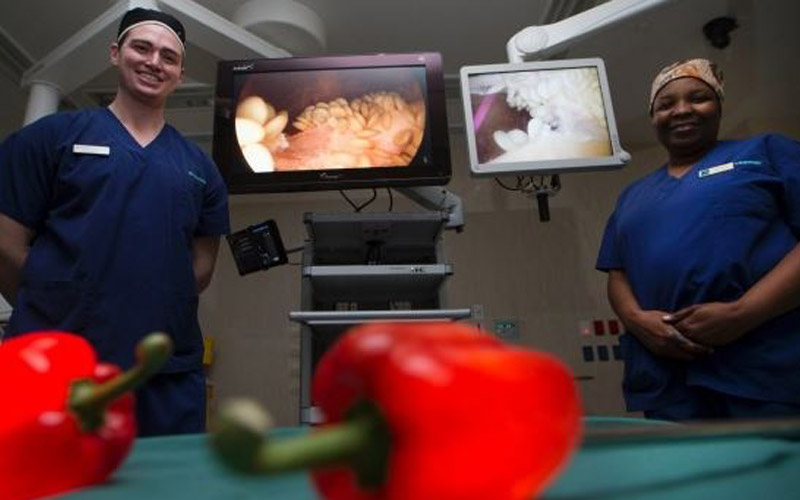From Hollywood to Braemar – technology that makes blockbuster movies is used at Braemar Hospital for patients undergoing keyhole surgery, and Braemar was the first hospital in Australasia to install the equipment.
Technology that makes Hollywood blockbuster movies is used at Braemar Hospital for patients undergoing keyhole surgery.
Braemar Hospital was the first hospital in Australasia to install ultra high-definition (4K) imaging tools in its operating theatres. The James Bond movie Spectre was made using 4K, as well as The Hunger Games: Mockingjay Part 2.
The human eye can see more than 10 million colours and shades – 4K allows surgeons to carry out keyhole surgery with images that replicate the human eye.
Orthopaedic surgeon Chris O’Meeghan said at the time of installation that the difference between current imagery and the 4K imagery was like the difference between an old big box television and the latest Apple screen. Mr O’Meeghan was chair of the Braemar Charitable Trust at the time of the investment; the Trust is the 100% owner of the hospital and is committed to improving health outcomes in the region.

“It’s much easier to look at. The clarity, contrast and colour are far better and there is a greater depth of field,” he said. “You can more easily differentiate between different tissues and ligaments.”
Keyhole surgeries are most commonly done for orthopaedic, gynaecology and ear, nose and throat patients.
Ear, nose and throat surgeon John Clarkson, who is a current Braemar Hospital Board Director, said the introduction of the technology meant surgeons could perform surgeries with even greater accuracy and precision because of the multi-million dollar technology.
Five of Braemar’s theatres have the new technology with more due to come on stream in the future. Already one of the digital operating rooms is set up to stream live images and sound so that specialists can demonstrate complex procedures to colleagues and hospital staff.
March 2024
